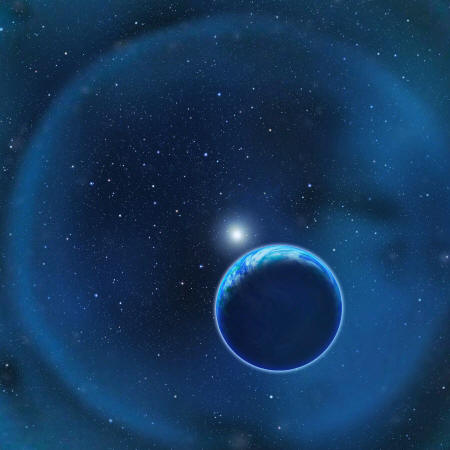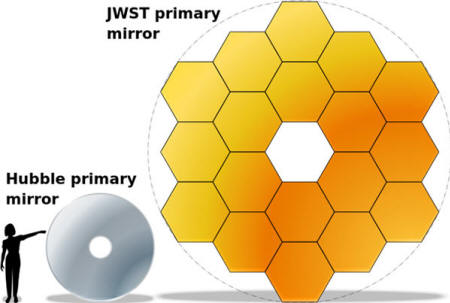|
from
ExtremeTech Website
The universe, as you probably know, is almost impossibly large.
It is almost 100 billion light years across and consists of of billions of galaxies and trillions of stars.
Thanks to recent observations made possible by the the Kepler space telescope and advanced astronomical techniques, we also know that the majority of these stars have orbiting planets.
The latest estimate is that there are up to 50 sextillion potentially habitable planets in the universe.
Now it's time to go one step further, though:
A planet orbiting a white dwarf (artist concept)
When Kepler was still operational (it broke earlier this year), it was capable of locating stars with orbiting planets, the size of those planets, and their orbiting distance.
Its successor, NASA's Transiting Exoplanet Survey Satellite (TESS) will launch in 2017.
While Kepler was focused on a single patch of sky with around 145,000 stars, TESS will be equipped with four telescopes that keep track of around 500,000 stars, including the 1,000 nearest red dwarfs. TESS is expected to find thousands of orbiting, Earth-sized-or-larger planets around these stars.
Finding yet more habitable planets is exciting, but to find out whether any of these planets actually harbor life we need the James Webb Space Telescope. In the same way that Kepler is succeeded by TESS, the James Webb Space Telescope is the successor to Hubble.
The JWST, a joint NASA/ESA/CSA venture that is due to launch in 2018, has a primary mirror (partially pictured at the top of the story) that's about five times larger than Hubble's, meaning it can resolve much fainter signals, locating stars and other objects that have never been seen before.
Because it primarily operates in the infrared band (unlike Hubble, which was more tuned towards visible light), the JWST will be able to see through dust clouds into hidden areas of space, too.
In short, if you were amazed by the imagery produced by Hubble, JWST will blow you - and the scientific community - away.
Hubble vs. James Webb Space Telescope, primary mirror size. The JWST will be able to gather a lot of light.
But back to the case in point: Finding alien life.
The JWST's scientific payload includes a spectrometer that's sensitive enough to analyze the atmosphere of distant planets.
Without going into the complexities of spectroscopy, it's essentially enough to say that every element has a telltale signature when light is reflected off it. In the case of the JWST, it will measure the light (from the parent star) that's reflected from a planet's atmosphere.
If there's oxygen or methane - both signs of biological life - then those elements will absorb a very specific range of frequencies, and reflect the rest. If you happen to be watching for the reflection, those missing frequencies can tell you exactly what elements are present.
Because these planets are light years away, and because the reflected light is incredibly dim, the James Webb Space Telescope will only be able to do this for large planets that orbit red and white dwarfs - but still, it's incredibly exciting to think that we might be able to identify signs of life from all the way over here on our little blue marble.
And then there's the New Worlds Mission - a mission to put an occulter into space (video above).
Dubbed Starshade, the occulter (essentially a big flying disc) would fly between the James Webb Space Telescope and the star that it's observing, blocking large amounts of light from bright stars that aren't being observed.
This would massively reduce the noisiness of collected imagery, increasing the fidelity of the data returned by the JWST.
With the Starshade in place, we would be able to probe thousands of nearby planets for signs of life. The New Worlds Mission is currently in the prototyping stage and will seek NASA funding in 2015, with the hope of launching into space sometime during the JWST's lifetime.
So, there you have it:
At this point it isn't clear just how many planets we'll be able to analyze - it might be a dozen, or it might be millions - but one thing's for certain:
|



